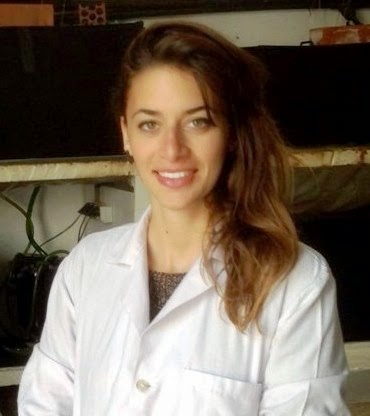Ayer, 25 de abril, Rosa Baeza alcanzó el
grado de Doctora tras defender su Tesis Doctoral titulada: “Overview of lipid roles in male European eel (Anguilla anguilla) reproduction. Application in broodstock diets’,
supervisada por mí y financiada fundamentalmente por el Proyecto PRO-EEL.
El tribunal estuvo formado por el Dr. Juan
Carlos Navarro (como Presidente) del Instituto de Acuicultura de Torre de la
Sal (CSIC, Castellón), el Dr. Eduardo Almansa del Instituto Español de
Oceanografía (Tenerife) y el Dr. Óscar Monroig de la University of Stirling (Reino Unido), que tras la exposición y la
posterior discusión le concedieron la máxima nota posible: Sobresaliente Cum laude.
El documento final es un compendio de 4
artículos previamente publicados (2 en Aquaculture y 2 en Comparative
Biochemistry and Physiology, Part A), con una introducción y una discusión
general, y si me lo pedís por e-mail, podemos enviaros un pdf con el texto
completo.
Enhorabuena Dra. Baeza!
Resumen
During the last
25 years, eel populations have declined considerably, this species is
considered outside safe biological limits. The life cycle of the eel is quite
complex including transoceanic migration whose conditions are still so unknown
that even the natural spawning process has never been observed.
Eels cease
feeding during migration and that is why their energy reserves such as lipids
play a crucial role and thus their in deep study is essential to obtain gametes
(eggs and sperm) quality as the first step for their reproduction in captivity.
In the last years, many efforts have been directed at the study of the
influence of fatty acids on the reproductive performance in females, but not in
male eels.
The present
manuscript describes the results obtained in two experiments. The first
experiment (which led to the three first articles included in the memory)
focused on the effect of fatty acids along maturation, their relationship with
steroid hormones and their effect on sperm quality parameters. The second
experiment involved the comparison of different diets designed, considering the
previously acquired insights into the most influential fatty acids on male eel
reproduction, and the assessment of their influence on the reproductive
performance of males.
The first
experiment was used to assess the changes in the fat content, as well as fatty
acids, in different tissues of male eels hormonally induced to sexual
maturation under different thermal regimes (two variables and one constant).
Males finished spermatogenesis earlier with a constant temperature of 20 ºC,
suggesting that eel spermatogenesis is tightly regulated by temperature. The
fat content did not change significantly in the muscle, but was increased in
the liver and decreased in testes during testicular development. With regard to
fatty acids, during sperm maturation, the liver was highlighted as the main
site of synthesis. Finally, EPA, ARA and DHA remained constant in testes, while
the level of the rest of fatty acids decreased significantly.
Using samples
from the same experiment, the correlation between the main steroid hormones and
fatty acids at different stages of testicular development were investigated.
Similarly as occurs in mammals, EPA and DHA were highlighted as possible
modulators of androgen synthesis. The set of the results obtained suggests new
perspectives concerning the functions and interactions between fatty acids and
steroids in fish spermatogenesis.
Also, with
samples from the first experiment, a study was carried out seeking to establish
the possible correlations between different fatty acids and several sperm
quality parameters. Correlations between several highly unsaturated fatty acids
with parameters such as volume, the percentage of motile sperm and sperm
velocity were found.
Finally, with
the acquired knowledge so far, a second experiment was carried out designing
feeds with different fatty acid percentages in order to evaluate the influence
of the diets on sperm quality. The results showed that high levels of DHA and
EPA in the diets induce higher volumes and high sperm motility. This study
allowed obtaining results applicable to the design of optimum broodstock diets
for this species.

